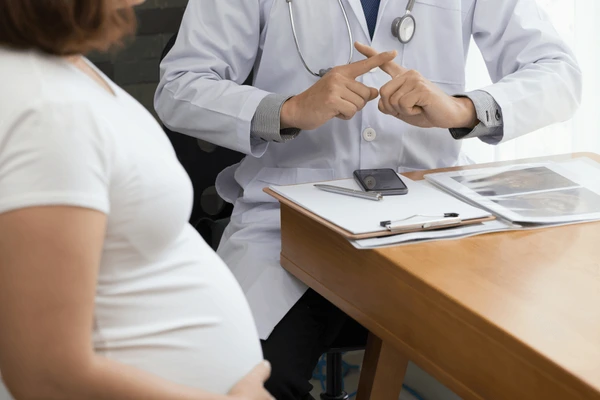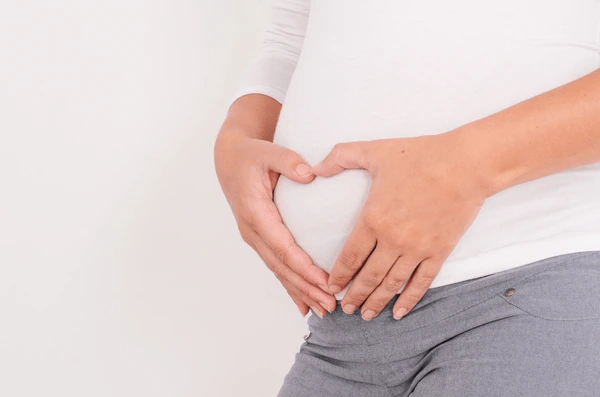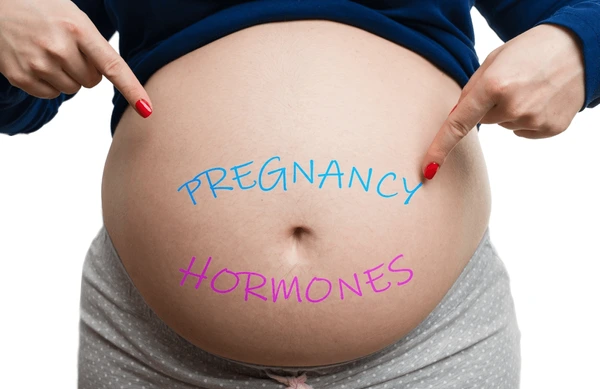-
Ganesh Talkies, Kolkata
Ganesh Talkies, Kolkata

Admins
13.10.2025
Understanding the warning signs during pregnancy is crucial for a safe journey to motherhood. Learn when to seek help from a reputed gynaecologist and protect both you and your baby. Pregnancy is a miraculous journey — filled with excitement, changes, and anticipation. Yet, amidst the happiness, it’s essential to stay alert to your body’s signals. Some changes are normal, but a few could indicate that something isn’t quite right. Knowing the warning signs during pregnancy early can help you act quickly, ensuring the safety of both mother and baby. Understanding the Importance of Early DetectionCommon Warning Signs During Pregnancy You Should Never Ignore1. Heavy Bleeding or Spotting2. Severe Abdominal Pain or Cramping3. Persistent Headaches and Vision Changes4. Sudden Swelling in Hands, Feet, or Face5. Pain or Burning During Urination6. Reduced Baby Movements7. Sudden Weight Gain or Loss8. High Fever or Persistent Chills9. Severe Vomiting or Dehydration10. Shortness of Breath or Chest PainAdditional Subtle Signs to Watch ForWhy Expert Care Makes All the DifferenceWhen to Contact Your Healthcare Provider ImmediatelyBuilding a Healthy Pregnancy Routine💬 Frequently Asked Questions (FAQs)A Thoughtful Note to Every Expectant Mother This guide helps you understand which symptoms require immediate medical attention and how to differentiate between normal pregnancy changes and warning indicators. Understanding the Importance of Early Detection During pregnancy, your body undergoes countless transformations. Mild discomforts — such as nausea, fatigue, and backache — are common and often harmless. However, some symptoms may point to complications like preeclampsia, gestational diabetes, or infections that could risk your health or your baby’s development. Early recognition and prompt medical care make a huge difference. The key is awareness — knowing when a symptom is a red flag rather than a regular part of pregnancy. Common Warning Signs During Pregnancy You Should Never Ignore Below are some of the most crucial warning signs during pregnancy that every expecting mother should recognize and report immediately to her healthcare provider. 1. Heavy Bleeding or Spotting Light spotting can sometimes occur in early pregnancy and might not always indicate a problem. But heavy bleeding, accompanied by cramps or pain, could signal a serious issue like: Miscarriage Placental abruption Ectopic pregnancy If you notice persistent bleeding or clot passage, seek emergency care immediately. Early medical attention can often make a difference in outcomes. 2. Severe Abdominal Pain or Cramping Mild stretching sensations are typical as your uterus expands. However, intense abdominal pain, sharp cramps,...

Admins
09.10.2025
Prepare Your Body for Pregnancy with holistic, natural steps that improve fertility and boost your chances of conception. Learn expert-backed insights from a reputed gynecologist. Understanding the Beauty of Preparing for Pregnancy Bringing a new life into the world is one of the most fulfilling experiences a woman can have. But before you take that beautiful step, it’s important to ensure your body is ready — physically, emotionally, and nutritionally. Many women believe pregnancy “just happens” when the time is right, but in truth, a healthy conception often begins months before you actually try. Understanding the Beauty of Preparing for PregnancyWhy Preparing Your Body MattersStep 1: Start with a Comprehensive Health CheckStep 2: Nourish with the Right FoodsStep 3: Maintain a Healthy WeightStep 4: Manage Stress Before ConceptionStep 5: Prioritize Sleep and RestStep 6: Limit Exposure to ToxinsStep 7: Support Your Gut and Hormonal HealthStep 8: Track Your Cycle and OvulationStep 9: Avoid Self-MedicationStep 10: Strengthen Emotional and Relationship WellnessExpert Insight: The Role of Preconception CounselingMost Asked FAQsA Thoughtful Takeaway for Aspiring MothersFinal Reflection – The Power of Readiness Preparing your body naturally for pregnancy doesn’t just improve your chances of conceiving — it also supports a healthier pregnancy and a stronger baby. Let’s explore how you can align your mind, body, and hormones for this incredible journey ahead. Why Preparing Your Body Matters Your reproductive system works in harmony with every other system of your body — hormones, metabolism, immunity, and even mental health. Preparing your body ensures: Balanced hormones for healthy ovulation. Optimal egg health for successful fertilization. Improved nutrient stores for fetal development. Reduced risk of complications like gestational diabetes or preeclampsia. Better emotional readiness, which is equally important for conception. Step 1: Start with a Comprehensive Health Check Before you begin your pregnancy journey, schedule a preconception health check-up. This helps identify potential issues early, such as thyroid imbalance, PCOS, or anemia, which could affect fertility. Key assessments include: Blood sugar and thyroid levels. Vitamin D and iron levels. Pelvic or ultrasound scans (if required). Vaccination status for rubella, hepatitis B, etc. These initial screenings help create a safe, healthy environment for conception. Step 2: Nourish with the Right Foods Nutrition plays a central role when you Prepare Your Body for Pregnancy. Think of your diet as the foundation of your fertility. Include these fertility-enhancing foods: Leafy greens: Spinach, kale, and broccoli for folate and iron....

Admins
06.10.2025
How to improve fertility naturally through diet and lifestyle changes. Learn science-backed food choices, habits, and expert insights from a reputed gynecologist. Understanding the Link Between Diet and Fertility Fertility is more than a matter of chance — it’s the outcome of a delicate balance between hormones, nutrition, and lifestyle. What we eat every day directly influences reproductive health, hormonal balance, and egg quality. For both men and women, nutrition plays a crucial role in improving the chances of conception naturally. Understanding the Link Between Diet and FertilityThe Science Behind Fertility and NutritionKey Nutrients That Support FertilityHow to Improve Fertility Through Diet and Habits1. Choose Whole Foods Over Processed2. Maintain a Healthy Weight3. Prioritize Healthy Fats4. Limit Caffeine and Alcohol5. Stay Hydrated6. Include Plant-Based Protein7. Mind the Glycemic IndexLifestyle Habits That Complement a Fertility DietFoods That Boost Fertility NaturallyCommon Fertility Myths About DietWhen to Seek Expert GuidanceFAQsNourishing Your Path to ParenthoodFueling Hope with Every Bite In today’s fast-paced world, many couples struggle with delayed conception. While medical interventions can help, small dietary and lifestyle changes can make a big difference. By understanding how to improve fertility through mindful eating, you can support your reproductive system naturally and boost your chances of a healthy pregnancy. The Science Behind Fertility and Nutrition Your diet affects every cell in your body — including the ones responsible for ovulation, hormone production, and implantation. Nutrients such as folate, zinc, omega-3 fatty acids, and antioxidants help regulate hormones, improve egg health, and reduce inflammation that can interfere with conception. Research has consistently shown that women who follow a nutrient-rich, balanced diet have better ovulatory function and higher pregnancy rates. Men, too, benefit from fertility-friendly nutrition through improved sperm count and motility. Key Nutrients That Support Fertility Here are some essential nutrients and their benefits when trying to conceive: Folate (Vitamin B9): Crucial for cell division and embryo development. Found in leafy greens, citrus fruits, and beans. Iron: Helps prevent ovulatory infertility. Sources include lentils, spinach, and fortified cereals. Omega-3 Fatty Acids: Found in walnuts, chia seeds, and fatty fish like salmon; improves egg quality and reduces inflammation. Zinc: Important for hormone regulation and egg maturation. Found in whole grains, pumpkin seeds, and nuts. Vitamin D: Supports hormonal balance and uterine lining health. Sun exposure and fortified dairy are good sources. Antioxidants: Protect eggs and sperm from oxidative stress. Found in colorful fruits like berries, pomegranates, and...

Admins
25.09.2025
Curious how pregnancy hormones affect women’s body health? Learn what changes to expect and when to consult a reputed gynecologist for safe guidance Pregnancy is a remarkable journey, but it also brings dramatic shifts in a woman’s body. Much of this transformation is influenced by pregnancy hormones. These chemical messengers regulate almost every aspect of the process— from sustaining the pregnancy to preparing the body for childbirth and breastfeeding. What Are Pregnancy Hormones and Why Do They MatterKey Pregnancy Hormones and Their ImpactHuman Chorionic Gonadotropin (hCG)ProgesteroneEstrogenRelaxinOxytocinProlactinPhysical Changes Triggered by Pregnancy HormonesEmotional and Mental Health InfluencesHow Pregnancy Hormones Affect Women’s Body Health Long TermEveryday Practices to Balance Hormonal ShiftsWhy Expert Guidance Is CrucialFAQs on Pregnancy HormonesGuiding Thought for Every Mother Understanding how pregnancy hormones affect women’s body health not only helps expectant mothers prepare physically but also provides reassurance during unexpected changes. With the right medical guidance, these changes can be managed for a healthier pregnancy and smoother postpartum recovery. What Are Pregnancy Hormones and Why Do They Matter Hormones act as the body’s internal communication system. During pregnancy, several hormones surge to: Support the growth of the baby. Maintain the uterine environment. Prepare the breasts for lactation. Adapt the body’s metabolism and circulation. These hormonal shifts are essential, but they also explain why women may experience mood swings, nausea, fatigue, or even glowing skin. Key Pregnancy Hormones and Their Impact Human Chorionic Gonadotropin (hCG) Produced in early pregnancy to support the corpus luteum. Plays a key role in sustaining progesterone production. High hCG levels often trigger morning sickness. Progesterone Relaxes smooth muscles, preventing early uterine contractions. May cause digestive issues like bloating or constipation. Supports the thickening of uterine lining for implantation. Estrogen Enhances blood flow to the uterus and placenta. Stimulates milk duct development. Contributes to skin changes and increased sensitivity. Relaxin Softens ligaments and joints, preparing the pelvis for childbirth. May cause backaches or changes in posture. Oxytocin Known as the “love hormone.” Plays a role in labor contractions and postpartum bonding. Encourages milk ejection during breastfeeding. Prolactin Stimulates milk production after delivery. Contributes to tender or swollen breasts during pregnancy. Physical Changes Triggered by Pregnancy Hormones Digestive system shifts – slower digestion, nausea, heartburn. Circulatory changes – increased blood volume, leading to swelling or varicose veins. Skin changes – pregnancy glow, stretch marks, or hyperpigmentation. Musculoskeletal adjustments – relaxed ligaments, causing flexibility but also instability. Breast development...

31.10.2025